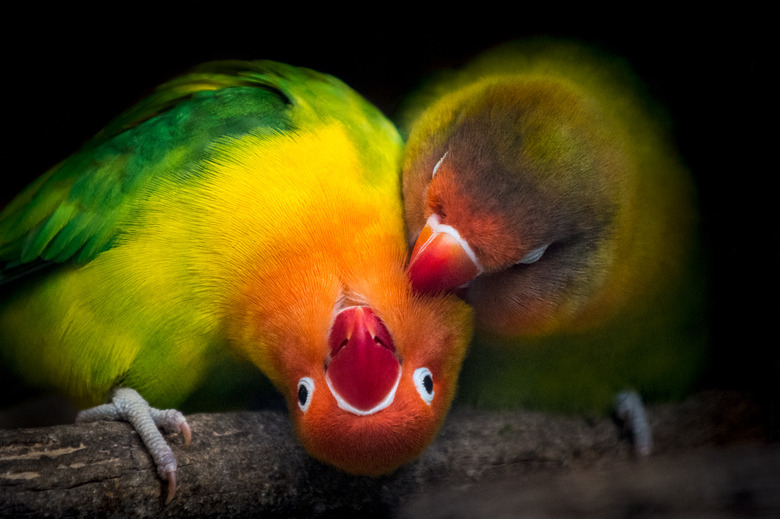How To Incubate A Lovebird Egg
If you have a pair of lovebirds and the female isn't interested in sitting or abandons her eggs, you'll need to hatch them yourself. The process isn't as simple as putting them in an incubator and waiting for the lovebird egg hatching time. Make sure the eggs get turned regularly and that the temperature and humidity are correct during the entire incubation time.
Make sure the egg is fertile
Make sure the egg is fertile
In order to successfully hatch, an egg must be fertile. Both a male and female bird are needed. It's not easy to tell the gender of lovebirds, as many types aren't visually dimorphic. If you're seeing eggs, at least one of your birds is female.
If her companion is also female, she might not sit on the eggs she laid, as she hasn't gone through the mating ritual that would fertilize them. Females will lay eggs during breeding season whether or not there is a male present. Your pet bird could lay up to eight eggs during warm weather.
Lovebirds seek out their mate as young as 2 months old. If you have dimorphic lovebirds where you can tell the gender or if feather DNA sexing shows you have a male and female, then your birds might not have the experience for breeding and parenting. Birds should be 18 to 24 months old before breeding to ensure success. An inexperienced male or unreceptive female due to being young are two reasons your eggs might be infertile.
Clean the eggs
Clean the eggs
Perhaps nothing on the internet regarding hatching eggs is more controversial than whether to wash eggs before incubation. However, there's little controversy about the fact that washed and sanitized eggs have a higher hatch rate and produce healthier baby birds. Dirty eggs can produce weak chicks from yolk infection and can even decrease the hatch rate in adjacent eggs due to bacterial infection.
Although the natural waxy coating on the egg, called the "bloom," does help keep out bacteria, it's very limited. Wash the eggs in water that is warmer than the egg, as cold water shrinks the egg's contents, drawing in bacteria through the pores of the shell.
When birds sit on their own eggs, the mama cleans the eggs, and oils from her feathers disinfect them. As this natural oil isn't an option, using an egg sanitizer is essential to preventing bacterial infection. Commercial egg sanitizing solutions are concentrated, so dilute it according to the directions. Store your sanitized eggs on a clean tray until you're ready to incubate.
Using a lovebird incubator
Using a lovebird incubator
Store the eggs for up to a week if you are pulling them from the nest as they're laid. This method is helpful if you have inexperienced parrots who eat their own eggs. Replace the eggs with a dummy egg to help them break this habit. However, you up the odds of your birds hatching if the eggs get incubated by the parents for the first 10 days or so.
Although lovebird eggs can be successfully hatched in almost any incubator, it's much easier when you have an incubator that is designed to work with eggs that are much smaller than chicken eggs. Temperature, humidity, and turning are three key factors in a successful hatch. Look for an incubator that will correctly turn the lovebird eggs at regular intervals.
Like other parrots, lovebird eggs need to be incubated at a temperature of 98.3 to 98.6 degrees. Temperatures above 100 degrees can kill the embryo. For the first 18 days, maintain the humidity level at 65 percent. After that, increase humidity to 75 percent. Lovebird egg hatching time averages 21 to 24 days.
References
- Lafeber Company: Question — Doesn't Sit on Eggs
- Interhatch: A Guide to Incubating Parrots
- Beauty of Birds: Egg Incubation Temperatures
- Parrot Care: Incubation Procedures and Hand Feeding
- YouTube: Ethan the Chicken Whisperer – Perfect Temperature and Humidity for Lovebirds!
- PetCoach: My Lovebird Eggs Don't Hatch. I Leave Them for 30 Days and Still Nothing
